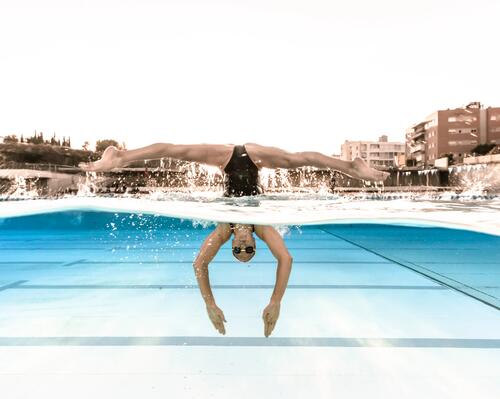The most important thing of all: your swimsuit
For artistic swimming, you will need a comfortable, light swimsuit that provides good support (especially for the bust). The two selection criteria: shape and material. Swimsuits with an “X” back and a high-cut leg are the most used in synchro because they allow greater freedom of movement.
As for the material, choose a swimsuit containing as little elastane as possible since it is not chlorine resistant. Instead, go for polyester or polybutylene (PBT), which is more difficult to put on but will last longer!








